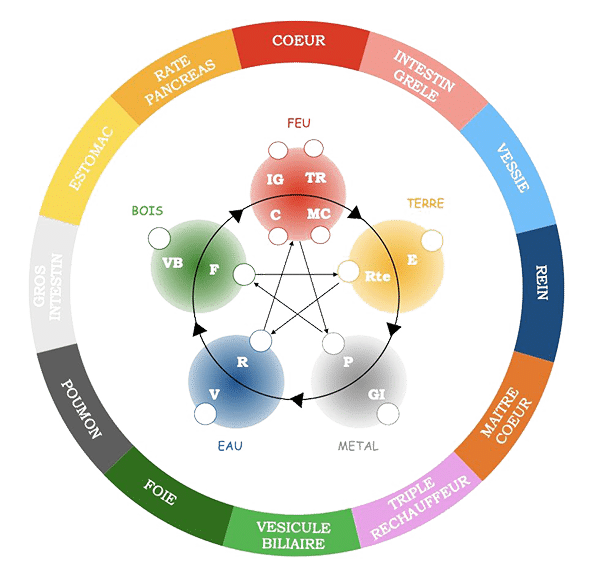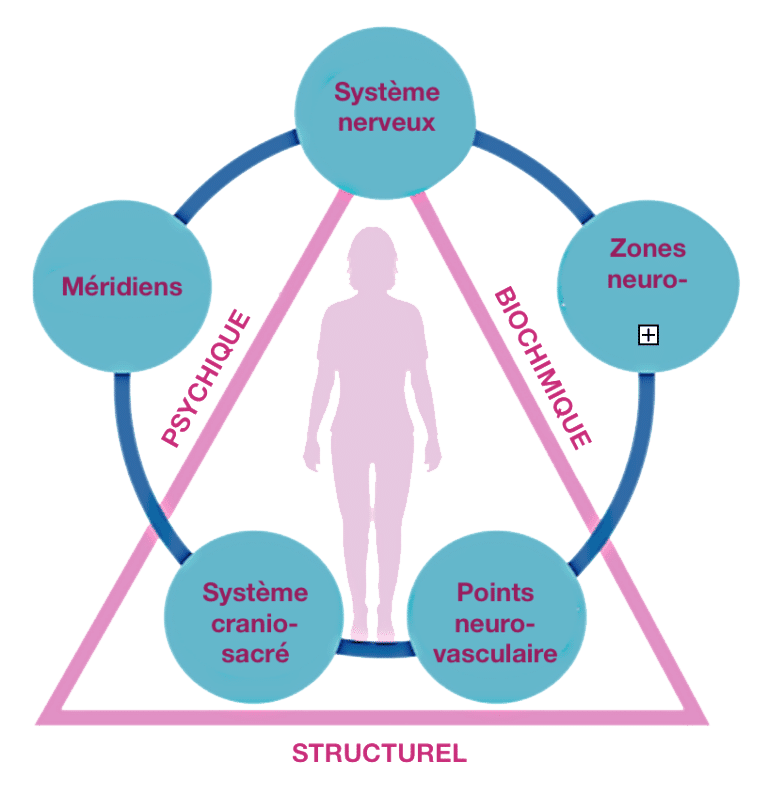Kinesiology
What happens during a
Kinesiology session?
If this is your first session
You will have received an e-mail confirming your appointment, which will last 1? hours, together with a questionnaire about your personal health history. We ask you to take the time at home to read and complete this before your appointment so that you are ready for an efficient discussion.
When you arrive for your appointment, this history will allow us to get to know each other and share information about why you come for a kinesiology session and what you expect from your sessions.
I will then give you a brief introduction to Neuroenergetic Kinesiology and you will have the opportunity to ask questions. You will also be asked to sign a consent and release letter. Please be assured that all information shared will be kept confidential.
If this is a follow-up session
It’s also a good idea to prepare in advance. I encourage you to take notes and record what happened after the last session. It is beneficial if you can share with me what has changed and what you would like to work on at this time.
I encourage you to prepare in advance so that you can get the most out of your session. (See ‘How to prepare’ on the ‘Common questions’ page).
The person who comes for a kinesiology session has a real desire to make a change in their life and is ready to participate and be active in the process.
No matter how much you read about Kinesiology, nothing beats feeling the benefits for yourself.
How to get the most out of
from a session
Switch off your mobile phone
Stay well hydrated
Wear comfortable clothes
Arrive at least 5 minutes early so that you feel more relaxed and receptive
Bring a notebook or paper to take notes: you may want to record tips or key moments
Be clear about your intention and the reason why you are here. This will help to improve your situation more effectively
The different stages
of a Kinesiology session
The session
During your kinesiology session, you will lie on a massage table and remain clothed. Comfortable clothing is recommended, as the kinesiologist may ask you to move your arms or legs in order to “interrogate” the muscles.
In kinesiology, the practitioner does not diagnose or treat. They start with your symptoms to find the underlying message that your body wishes to communicate via the muscle test.
The muscle test, used in Kinesiology, does not measure the raw physical strength of the muscle, but it gives the Kinesiologist information such as: “Yes” or “No” by evaluating the biofeedback messages of the Biological history that has been imprinted in your body.
Usually, once a priority imbalance has been restored, you will find that other related imbalances will disappear shortly afterwards.
Initial checks
Using the muscle test, we will manually check that the muscle we are going to use as an indicator during the session is effective and will accurately communicate the “biofeedback” to the kinesiologist.
If we detect a miscommunication that could be caused by stress, we will work on rebalancing until the muscle is ready to communicate effectively.
Hydration: Good hydration is important for an effective session, allowing better circulation, clarity and efficiency of the body’s overall communication.
Balancing: involves checking that your nervous system has effective connections to the brain, transmitting precise coordination. We will check the balance between your ‘left and right’, ‘up and down’ and ‘front and back’ sides.

"Record" your stress or discomfort
This is the point at which you are invited to state why you are coming for this session: the clearer your intention, the more effective the session will be.
If it’s a physical problem, you’ll be asked to show or move the area involved. If it’s too painful, you can simply express it. If it’s too emotional or too difficult to verbalise your problem, don’t hesitate to tell your practitioner, who will capture the information in a bio-reactive way while you’re thinking about it.
end of the session
You will have time to talk to your practitioner about your feelings or manifestations during the session. This will be an excellent time to plan the next session. Your kinesiology practitioner will advise you on relaxation techniques, movement exercises, lifestyle changes, nutritional supplements and more. The practitioner will usually record what has happened during the session, so that progress can be assessed over time when more than one session is required.
Keep in mind that this is a partnership in which you must be fully involved.
The more you can share with your practitioner, the better it will facilitate and ensure the success of your journey towards your state of harmony.
Balancing protocol
Neuro-energetic kinesiology uses various balancing techniques. Muscle testing and biofeedback of your body will inform the practitioner of the most appropriate protocol:
– Structural (anatomical)
– Physiological
– Neurological
– Emotional
The practice of neuro-energetic kinesiology balances the flow of energy by acting on the meridians or certain acupuncture points of traditional Chinese medicine, pressing them to tone them up, or touching them to calm them down. The chakras (energy centres) of the Ayurvedic tradition are also used.

Corrections phase
During this practice, some people may feel a sensation of deep relaxation, tingling, discomfort or nothing at all. The need to yawn or sleep is frequent, and don’t hesitate to do so as it is beneficial. Whatever your sensations, don’t hesitate to share them with your practitioner, especially if you feel discomfort, and to ask questions.
The correction phase concludes the session. This part allows your body to find its natural balance (homeostasis).
The correction techniques used are generally acupressure, meridian tracing or chakra balancing, using sound or light. This is also determined by muscle testing.
Your practitioner is your guide: Her aim is to support you your self-healing.
How many sessions are required?
Kinesiology is a brief therapy method, but you should expect to have 2 or 3 sessions for lasting benefits.
Some ailments require a greater number of sessions with a more or less sustained frequency. Our work together will determine the length of your journey.
We are not responsible for what is done to us, but we are responsible for what is done to us. This implies that the person having a kinesiology session is fully aware of what is happening. They understand it, give it meaning and integrate it into their history.
Your questions
How can Kinesiology help?
- Anxiety
- Fears and phobias
- Allergies and food sensitivities
- Arthritis and joint pain
- Asthma
- Back, shoulder and neck pain
- Bloating and gas
- Chronic fatigue
- Coordination and balance problems
- Depression
- Digestive problems
- Dyslexia
- Eczema, rashes and skin conditions
- Frequent infections and immune problems
- Insomnia and poor quality sleep
- Constipation or diarrhoea
- Low energy levels
- Menstrual and hormonal problems
- Tinnitus
- Burn-out
- Autoimmune diseases
- Porosities of the intestines
- Strain: carpal tunnel, hallux valgus
What can I expect from a kinesiology session?
Most of the time, you won’t feel a thing, and you may even have forgotten why you came. You may also feel confident and clear-headed.
You may find that you feel much better almost immediately, very relaxed, very tired or, on the contrary, energetic.
This may mean that things are being processed.
Occasionally you may feel worse, but this is temporary and shows that there is a process of change within you. We call this a healing crisis.
What are the benefits of kinesiology?
Kinesiology restores balance to the entire system, facilitating the self-healing process.
Kinesiology helps to :
- Increase energy and vitality
- Prevent illness
- Improve posture
- Relieve physical pain and tension
- Release and manage emotions and stress
- Improve brain function and coordination
- Discover individual nutritional needs and sensitivities
How many consultations are required?
The number of sessions depends on the individual and the way in which the person embarks on the journey. Generally, three to six visits are recommended to allow the mind and body to familiarise themselves with the process and assimilate the corrections. After that, routine consultations are recommended two or three times a year.
How do you prepare for a session?
Arrive at least 5 minutes early, which will help you feel more concentrated and receptive.
Wear comfortable clothes.
Make sure you’re well hydrated.
Bring a notebook or paper: you may want to record reminders or key moments.
Switch off your mobile phone so that you can reap the benefits of your session.
Let your intention be clear about why you are here, this will help the change to happen. Be open to the journey and welcome what comes your way.
Are there any contraindications to kinesiology consultations?
Yes, there are contraindications to a kinesiology session and you must notify and cancel your appointment and consult a general practitioner in the event of :
- Acute pain
- Infection or contagious disease
- Fever
- Inflammation
- Nausea
- Vomiting
- Diarrhoea
- Bleeding or scarring
